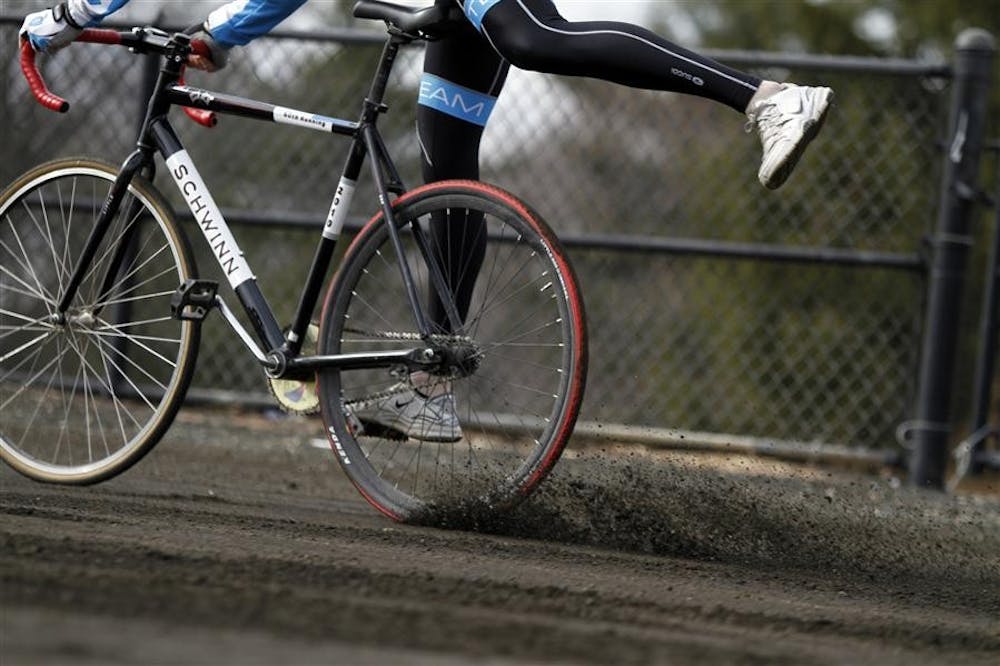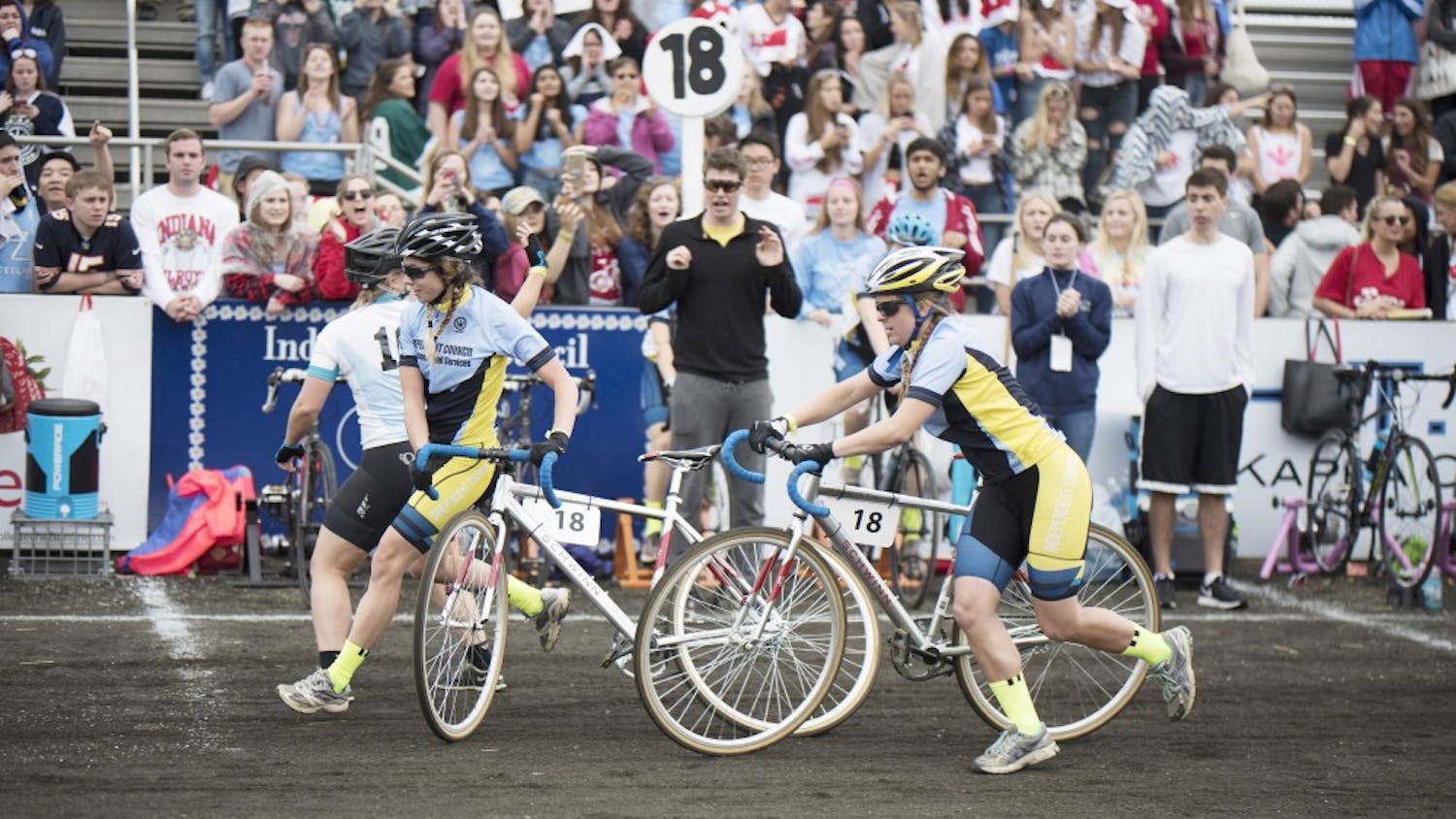There are other high-profile cycling races in the world. There are other big party weeks and weekends at colleges across the country. There are other big draws for major musical acts.
One factor, however, that Little 500 has that similar events don’t is a cinder bike track.
It’s the only one of its kind in the world.
The race began on a cinder running track in 1951 when cinder running tracks were commonplace. The track at Bill Armstrong Stadium has stayed the same, while many other tracks are now asphalt, concrete, Mondo or any number of different surfaces.
This move from cinder running tracks is a good one, Little 500 groundskeeper Steve McCutchen said.
“I know in high school ... you’d try to run on (the old cinder tracks), and it was like one of those nightmare dreams where you felt like everything was in slow motion,” McCutchen said. “You couldn’t move.”
Though the move from cinder worked for running tracks, the decision to stay with cinder is necessary for Little 500 races, said Delta Tau Delta Coach Ken Nowakowski.
“I think they’ve kept it cinder just because of the tradition of the race,” Nowakowski said. “You wouldn’t be able to run the race the way it is on any other surface.”
Nowakowski rode competitively from 1975 to 1989 and was the head coach and race director at the Indianapolis Velodrome for 14 years. The Velodrome is a concrete track complete with steeply banked turns.
The Little 500 track is almost completely flat all the way around, making it necessary to slow down around turns.
“If you go full speed into turn three and four,” Nowakowski said, “you’ll end up in Bedford instead of going into the home stretch.”
The uneven cinder surface also makes it a little more difficult to maneuver, and the lack of banking makes it tougher to pass riders on the outside during turns, Nowakowski said.
During exchanges in the Little 500, skidding on the bikes is necessary. If it were done on a concrete track, the tires would be worn down and the rider would struggle to maintain control of the bike.
“Obviously, on the hard surface, you would wear down the tire relatively quickly, and you would lose control of the bike,” Nowakowski said. “Not saying that skidding on a Little Five bike offers you control. No, on the contrary, it does not.”
Nowakowski has coached Delta Tau Delta since 2009, so he has become familiar with the racing conditions on race day. He said mishaps and crashes are not only common on the track but are almost expected, and the cinder surface has both its advantages
and disadvantages.
“If you were to stumble and crash on a concrete surface, it’s a lot less unforgiving than the cinder track,” Nowakowski said. “Although some people would probably question that if they’ve crashed hard and are picking cinders out of their skin.”
Cinder track is one-of-a-kind

Get stories like this in your inbox
Subscribe





